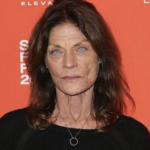Sedona, Arizona, is known for its beautiful red rock landscapes and its unique turquoise McDonald’s arches. Unlike the usual golden arches found at McDonald’s locations worldwide, the ones in Sedona are turquoise. This special color choice is a reflection of the city’s cultural values and architectural guidelines, which are designed to blend with the natural colors of the Southwest.
In Sedona, turquoise is more than just a color; it is a part of the local heritage that has been significant for over a thousand years. To the native people, turquoise symbolizes “Mother Earth” and “Skystone,” and it is often seen in their jewelry and art.
In 1993, when McDonald’s wanted to open a restaurant in Sedona, the city’s strict building codes required them to use turquoise arches instead of their iconic gold ones. The reason behind this decision was to keep the new building in harmony with the desert’s natural color palette, which includes rich reds, oranges, and tans from the surrounding mineral-rich landscape. The local officials believed that the traditional golden arches would not fit well with these natural colors.
This idea of adapting to local cultural and aesthetic values is not unique to Sedona. In Roswell, New Mexico, for instance, there is a McDonald’s that is shaped like a UFO, fitting in with the town’s famous association with extraterrestrials.
Similarly, in other parts of the United States, McDonald’s restaurants have embraced local styles. In New York, there is a McDonald’s located in a farmhouse that dates back to the 1700s, and in Las Vegas, the McDonald’s features large, bold arches that match the city’s extravagant architecture.
In Sedona, the turquoise arches are a testament to the city’s commitment to preserving its natural beauty and cultural heritage, blending a global brand with local identity.


